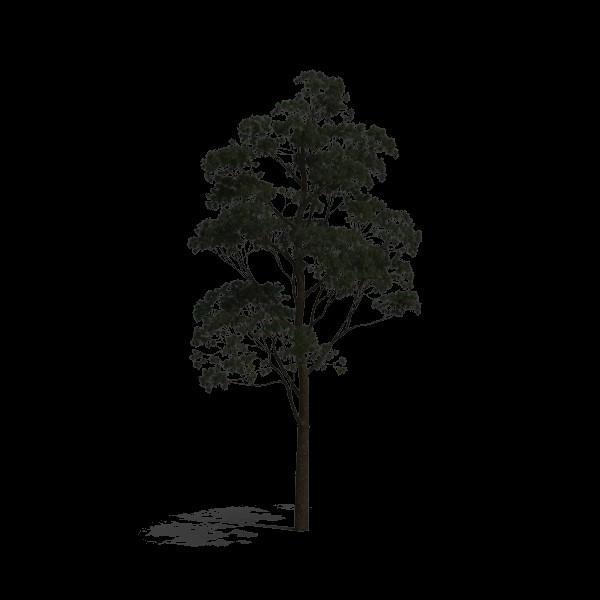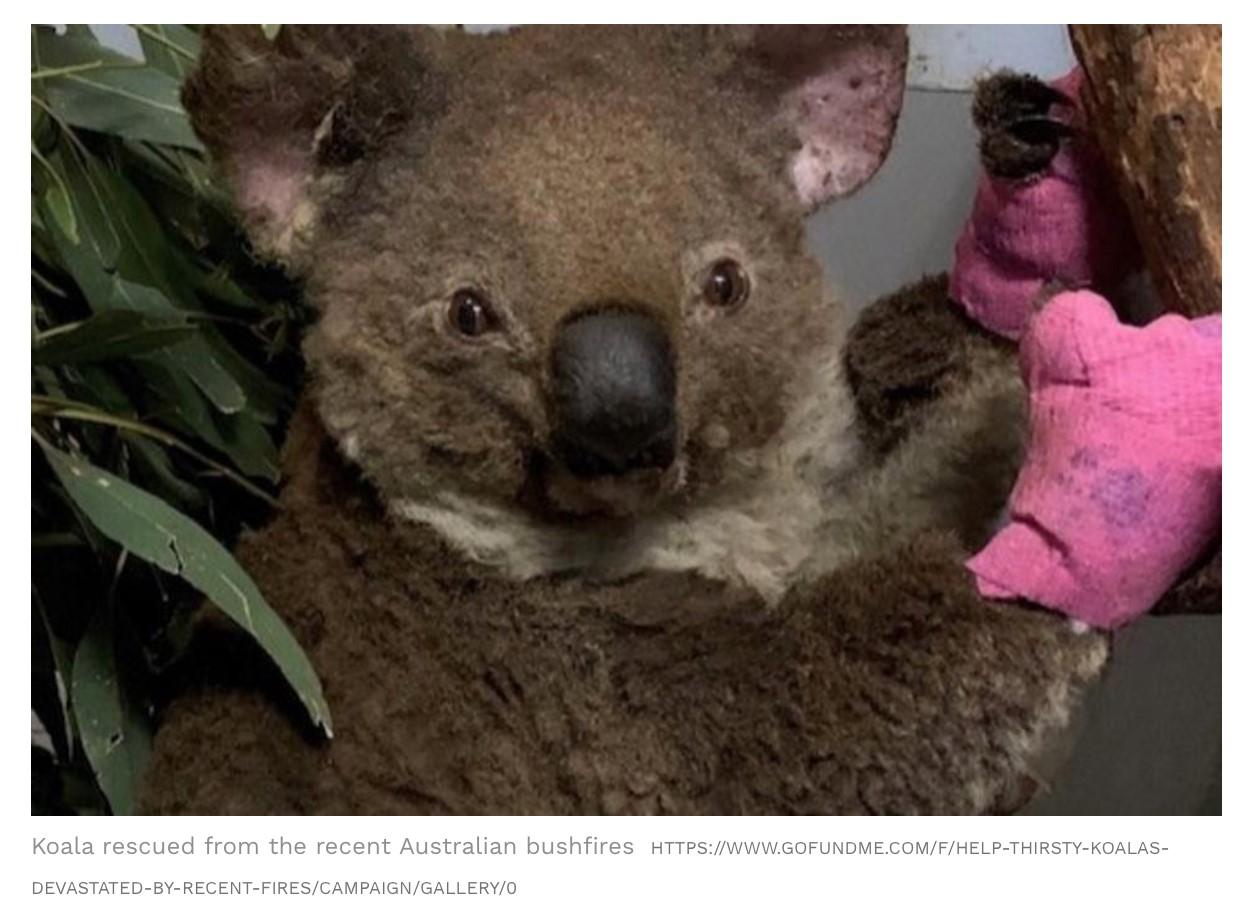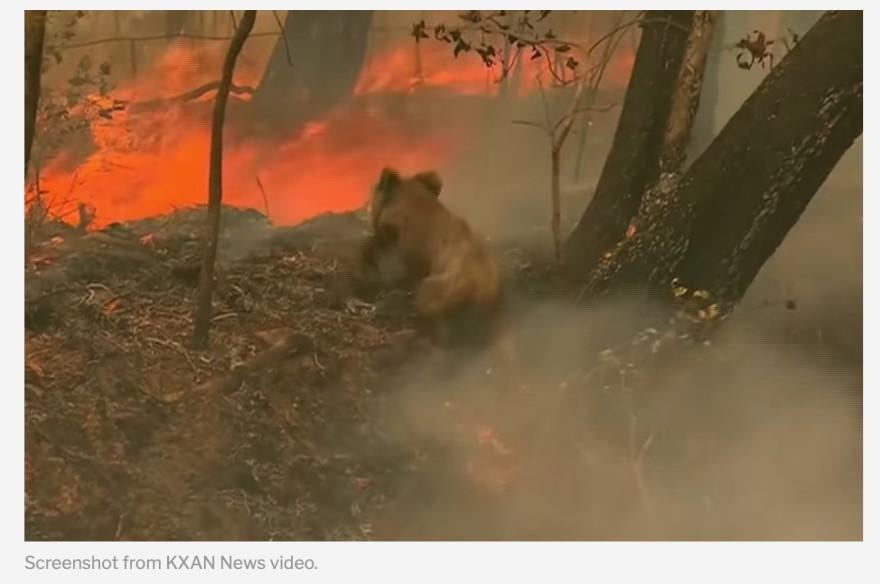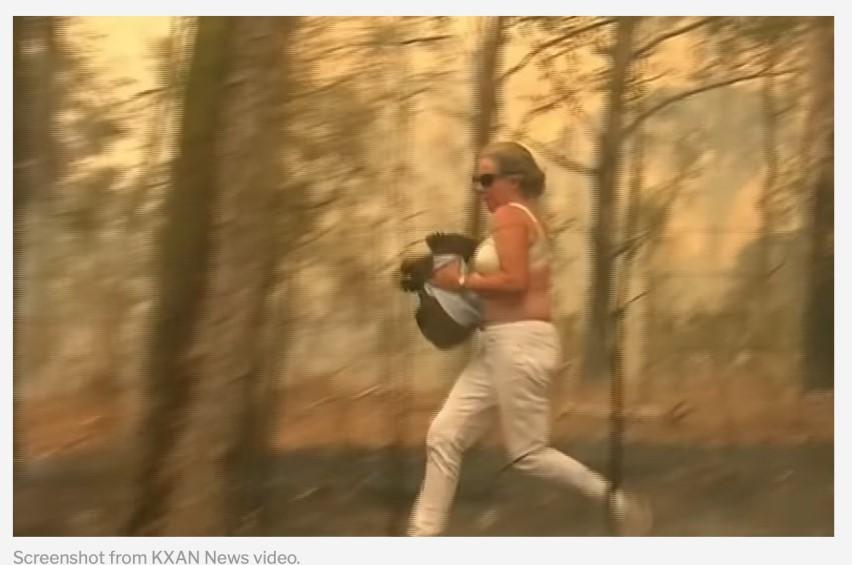
4 minute read
A Quick Look at Disaster in Southern Australia
By Kira Siligato
Beginning on Tuesday, November 19th, 2019, severe fire risk warnings forecasted what has grown to become a massive and catastrophic bushfire across southern Australia. It began in New South Wales where reported “at least 2,471,053 acres” (Freedman) has been overtaken by fire. This is three times the amount they saw in the previous year’s bushfire season alone, which is primarily January-February. This rapid and capacious spread so early into Australia’s summer (which doesn’t even officially start until December 1st) is accelerating concern of climate change’s role in this and what the trends predict for the upcoming future of Australia and its habitats.
How do bushfires start and why is this one worse than others?
Bushfires are not uncommon in this region of the world. They occur in hot and dry conditions and can be set off either by natural causes like lightning and high winds or from human activity. The Forest Fire Danger Index (FFDI) is calculated from a sum of conditions including rainfall, evaporation, wind speed, temperature and humidity. In the case of Australia’s current and concerning early onset of bushfires, its FFDI has measured historically high rates. The map below shows the majority of the country “experienced between “above average” and “highest on record” fire conditions in winter when compared with the average since 1950” (Readfern et al.). Not only are this year’s conditions emphasized for their record breaking measures but also for their ability to affect areas that are rarely impacted by fires, at least to this extent. This includes “rainforests, wet eucalypt forests, dried-out swamps and organic matter in the soil where the water table has dropped” (Readfern et al.). The conditions are so serious that multiple total fire bans have been put into effect and have already penalized and charged people. The website for the Department of Fire & Emergency Services describes the penalties being “You may be issued with a $1,000 infringement, or upon conviction you may receive a penalty of $25,000 and/or be jailed for 12 months, if you breach a Total Fire Ban” (Emergency Services Authority). Those people have either deliberately started fires (mostly younger people who must think this is just an internet trend) or were doing thing like barbecuing or having campfires outdoors, openly smoking, operating or using any internal or external combustion engines without a spark arresting device, etc.
Who is being directly affected?
Over the years, bushfires in Australia had not been a direct threat to human life. Hundreds of homes are already destroyed and multiple public buildings such as schools and hospitals have also burnt down. This year, reportedly four individuals have lost their lives already due to the fire. Without

even being close to the height of their bushfire season, the smoke has already stretched to cover Sydney, potentially damaging millions of people in the city and surrounding areas. BBC released an article claiming that bushfire smoke “…is not as bad as industrial pollution but is still harmful” (BBC Staff). Any presence of smoke is still damaging to air quality. Individuals with asthma and other respiratory problems as well as children and the elderly who are more susceptible have been warned to not do any outdoor activities and to be cautious. Wildlife faces much greater threat than humans currently do in this case. Most articles are stating that Koalas are foreseeing extinction. Previously stated was the fact that the eucalyptus, Koala’s main habitat and diet, has unusually been incinerated by bushfire. This means that for those who survive, there will be no home for them to return to nor any outstanding suitable source of nutrition for the species. Survival rates are not promising: “The chairman of the Australian Koala Foundation, Deborah Tabart, estimates that over 1,000 koalas have been killed from the fires and that 80 percent of their habitat has been destroyed” (Nace). This Forbes article also explains that the species’ label of “functional extinction” indicates that their population seems to be no longer viable at this time. Many zoos, other wildlife groups, and individuals are volunteering to take in the overflow of saved Koalas that have been brought to Koala hospitals and rehabilitation centers. A video of a women saving a Koala from direct fire has gone viral on the internet, the Port Macquarie Koala Hospital has set up a GoFundMe page to support animals inside of the center as well as those who are still stuck in the middle of disaster- immediate action is being taken as this threat has become intensely apparent and gruesome.



Works Cited
BBC Staff. “Australia Bushfires: Death Toll Rises as Communities Remain on Alert.” BBC News, BBC, 14 Nov. 2019, https://www.bbc.com/news/world -australia-50413869.
Emergency Services Authority. “What Are the Penalties for Ignoring a Total Fire Ban?” DFES, CorporateName= Fire and Emergency Services Authority of Western Australia; Contact= 61 8 9323 9300; Address=FESA House 480 Hay Street, Perth Western Australia 6000, 6 Nov. 2019, https:// www.dfes.wa.gov.au/totalfirebans/Pages/TotalFireBanPenalties.aspx.
Freedman, Andrew, and Diana Leonard. “2.5 Million Acres on Fire. Stifling Smoke. Burned Koalas. This Is Spring 2019 in Australia.” The Washington Post, WP Company, 21 Nov. 2019, https://www.washingtonpost.com/ weather/2019/11/21/massive-bush-fires-horrendous-heat-worsening-drought -plague-australia-summer-nears/.
Nace, Trevor. “Fires May Have Killed Up To 1,000 Koalas, Fueling Concerns Over The Future Of The Species.” Forbes, Forbes Magazine, 26 Nov. 2019, https://www.forbes.com/sites/trevornace/2019/11/23/koalasfunctionally-extinct-after-australia-bushfires-destroy-80-of-their-habitat/ #641adcbb7bad.
Readfearn, Graham, et al. “Australia Bushfires Factcheck: Are This Year's Fires Unprecedented?” The Guardian, Guardian News and Media, 22 Nov. 2019, https://www.theguardian.com/australia-news/2019/nov/22/australiabushfires-factcheck-are-this-years-fires-unprecedented.











